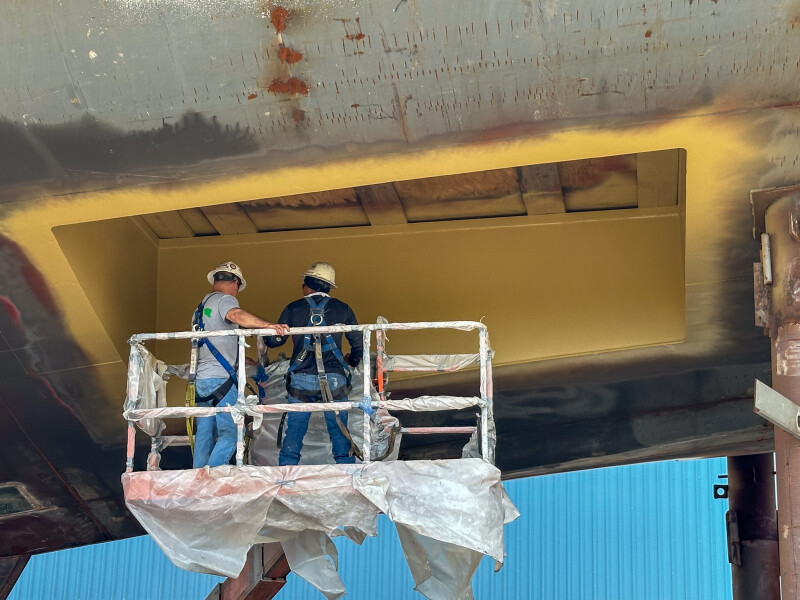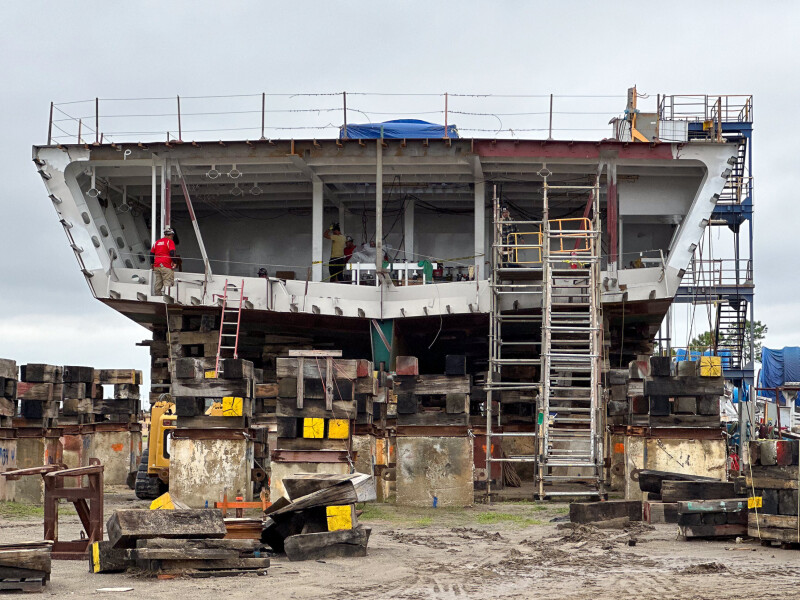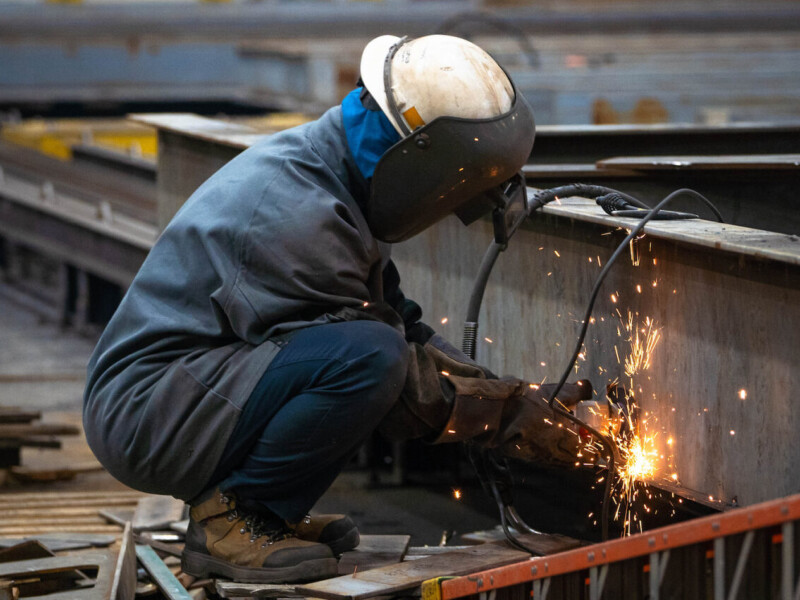It’s a good time to be in U.S. shipbuilding — the skies are fair, and the wind is at your back.
Amid heightened publicity — including an executive order by President Donald Trump to revitalize the U.S. maritime industrial base — the need for American shipbuilders to rebuild and modernize for both national security and sound economic policy has become increasingly evident.
But the shipbuilding renaissance faces a potential stumbling block: longstanding workforce challenges that continue to plague the industry. These concerns are top of mind for shipbuilding executives, who recognize that overcoming them is essential for sustaining long-term success.
ROOM TO GROW
The Trump administration’s focus on the U.S. shipbuilding sector already seems to be something of a windfall.
“Shipbuilding has waned since World War II, but in the last five years, more attention has been paid to it and more of the public is aware of the sector and the state it’s in,” said Chad Fuhrmann, a senior consultant at Core Group Consulting. “The industry will see a benefit from the Trump administration [focusing on it], but it’ll require some patience. This push for shipbuilding is with an eye toward national defense, rather than the commercial side. But the commercial side of the industry will benefit as well.”
The recent attention on the sector builds on the publicity received by the maritime industry during the Covid-19 pandemic, when global supply chain disruptions highlighted its essential role. With over 90% of products consumed in the U.S. passing through the maritime supply chain at some stage, the impact of its absence on daily life became clear.

While many Americans are aware of the monumental effort to supply U.S. troops in World War II, the shipbuilding sector is a sliver of its old self. Today, it produces less than 1% of the world’s oceangoing vessels annually. China, meanwhile, produces about half. Everyone in the sector agrees that the U.S. must reinvigorate its shipbuilding industry and grow it.
Amid the recent wave of optimistic headlines about American shipbuilding, one challenge continues to cast a long shadow: how to attract young, ambitious workers to an industry where entry-level wages can start as low as $35,000 a year. Yet for those who stick with it and build their skills, earnings can climb to five times that amount or more. The sector, like much of the American workforce, is grappling with a rapidly aging labor pool — and the clock is ticking.
The U.S. shipbuilding sector currently employs about 105,000 workers, according to a Maritime Administration report. Both government officials and industry leaders have emphasized the urgent need for more skilled labor to support continued growth.
“That alone is a big concern for the industry,” said Fuhrmann. “How do we attract people, when young people aren’t interested in the work? It’s a great industry — providing adventure, money, and opportunity. Why don’t people know about it?”
Because the U.S. shipbuilding industry has drastically shrunk over recent decades, rebuilding it will not happen overnight. A recent McKinsey report on the untapped potential of shipyards gives a sense of the gravity of the problem: “Shipyards, once the backbone of flourishing communities, now face myriad challenges — from talent gaps to outdated operating models — that threaten their ability to grow and thrive. … Overall shipbuilding production has fallen to historic lows largely because of the decline in commercial production: U.S. shipbuilding output has decreased by more than 85% since the 1950s, while the number of American shipyards capable of building large vessels has fallen by more than 80%.”
LABOR FORCE REBUILD
Trump’s recent executive order, “Restoring America’s Maritime Dominance,” is expected to significantly support the maritime sector through its Maritime Action Plan and Maritime Security Trust Fund. The order outlines broad goals, including rebuilding the U.S. shipbuilding industry by addressing workforce needs. A key initiative is expanding maritime training and education, starting with a report on workforce challenges in the sector.
Industry supporters cheered at the news. Matthew Paxton, president of the Shipbuilders Council of America, said the trade group supports President Trump’s action to restore and strengthen America’s shipbuilding and ship repair industry. “The establishment of a Maritime Action Plan that includes a Maritime Security Trust Fund, strategic commercial fleet program, along with new tax credits, grants, and strategic investments, will provide a powerful environment to rebuild our shipbuilding capacity and build the fleet of the future,” he said.
The effort is not just a win for the shipbuilding sector, but also for the nation, industry officials have said.

“A strong U.S. shipyard industry is essential not only for our economic security but also for our homeland and national security. With this executive order, it is clear that President Trump and his administration is deeply committed to reenergizing and investing in our nation’s shipyards, and we are eager to begin this important work alongside policymakers and industry partners to restore America’s shipbuilding strength for the security and growth of our nation. U.S. shipbuilders stand at the ready!” Paxton said.
Now, U.S. shipyards are ramping up their plans to meet both projected and expected greater, faster growth.
Hanwha Philly Shipyard, Philadelphia, for example, has outlined ambitious plans that already are being implemented to modernize its shipbuilding facilities, expand its production capacity for both commercial and naval vessels, and to further develop its workforce.
Likewise, Eastern Shipbuilding Group (ESG), Panama City, Fla., intends to build on its strengths. The largest private employer in Northwest Florida, ESG has a dozen talent pipelines and its own training programs to attract young employees, through its partnerships with local high schools, technical schools, and colleges. The company is encouraged by the attention coming from Washington, D.C., and is expecting great things to come.
“With the White House rightly taking historic steps to revive our industry, I’d love to see a national initiative focused on workforce development. We need workforce development grants, along with state and local incentives, to attract skilled workers to the maritime industry and support this new era of American shipbuilding,” said Joey D’Isernia, ESG’s chairman and CEO.
Clearly, more people are learning about the opportunities in shipbuilding. But will that be enough?
To meet growing demand, more companies and shipyards will have to think creatively about attracting and retaining employees long term. They’ll want to partner with the government, but also with schools, local consortiums, and other like-minded business groups.
One organization partnering with shipbuilders to address the growing workforce shortage is the American Welding Society (AWS), which has launched several initiatives aimed at preparing workers to meet the demands of both defense and commercial shipbuilding.
“The administration’s renewed focus on shipbuilding is catalyzing more collaboration between government, industry, and organizations like AWS,” said Trish Fliss, senior media lead for AWS. “Our welding apprenticeship programs are helping create a skilled and specialized workforce for our younger generations, while our certification programs ensure ongoing professional development.”
Others may find lessons in how ESG attracts and retains talent. Through its BUILD Initiative, the company offers competitive wages and benefits, invests in workforce training, and fosters a culture of collaboration. ESG’s apprenticeship programs and emphasis on employee development align well with an industry on the brink of significant growth.




